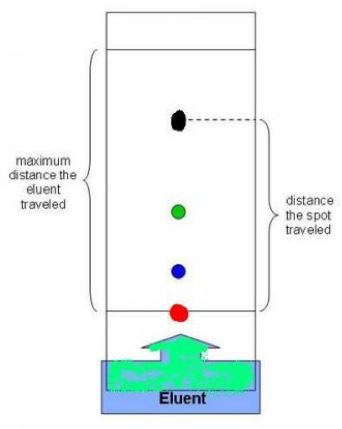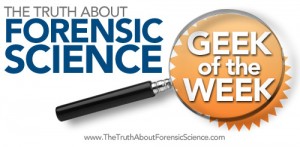The Forensic Science Geek of the Week
Please visit the www.TheTruthAboutForensicScience.com FaceBook fan page.
The week 77 “www.TheTruthAboutForensicScience.com Forensic Science Geek of the Week” honors goes to: Mehul B. Anjaria
According to the website of Geek, the following is offered:

According to the website of Geek, the following is offered:
MBA DNA Consulting, LLC was founded with the goal of providing a bridge between science and the law. While forensic science is in theory science applied to matters of the law, it may only answer questions posed by one interest. I have come to realize that technical knowledge, skills, and abilities even when coupled with excellent presentation skills, do not make one a good consultant. It is in fact the ability for the scientific consultant to actually adopt the mindset of the attorney and understand the specific pragmatic goals of the consultation… Prior to founding MBA DNA Consulting, LLC I was involved in establishing California’s first ASCLD/LAB-International accredited forensic DNA laboratory. I am also interested in lending my expertise to organizations wishing to establish a DNA laboratory and/or attain ASCLD/LAB-International accreditation.” Among his listed services that he offers includes: DNA case file review, Witnessing of laboratory DNA testing, Expert witness DNA testimony, Assistance with DNA direct/cross-examination questions, Review of expert witness DNA testimony, Pro per DNA assistance and DNA Education/training. His resume is available here: Click here for the CV of Mehul B. Anjaria
Congratulations to our Forensic Science Geek of the Week winner!
OFFICIAL QUESTION:

- Forensic Science Geek of the Week Challenge
1. What is the above a diagram?
2. What is it used for?
3. How does it work?
Our Geek of the Week answered:
This is the now ‘old school’ analytical technique known as thin layer chromatography. It is very simple, yet can separate analytes and give some preliminary indication as to the identity of the analytes.
TLC depends on the stationary phase, often a glass plate coated with silica and the mobile phase which is some sort of solvent that will be wicked up by the silica with capillary action and travel up the plate.
Analytes are typically dissolved in a suitable liquid and then spotted toward the bottom of the plate. The plate is then placed in the solvent, with the analytes being above the solvent level. As the solvent travels up the plate, the interactions of the mobile and stationary phases cause the analytes to move up the plate at various rates. The rate depends on numerous chemical properties such as their affinity for the stationary phase and their solubility in the solvent.
The process is stopped sometime before the solvent front reaches the top of the plate. The analytes will present as spots at different locations on the plate. The analytes typically need to be visualized with a chemical spray or particular lighting.
In terms of separation, a selected component of an analyte mixture can in some instances be physically isolated from the plate and further studied. In terms of preliminary identification of analytes and their components, the distance traveled and the appearance of the spots is compared to known standards also run on the plate.
An Rf value is calculated which is the distance the spot traveled from the origin divided by the total distance the solvent front traveled. Rf values of analytes and standards can be compared.
TLC is a quick and crude method to determine contents of an analyte. One use is as a tentative identification of street drugs such as methamphetamine, cocaine, marijuana, etc. It also has applications in toxicology and industrial chemistry. It can separate pigments, inks, etc.
[BLOGGER’S NOTE: What a great answer. Thank you for participating. Congratulations on being our Geek of the Week. In this day and age, Thin Layer Chromatography should never be used as a means to qualitatively identify an unknown. It is of insufficient specificity. The interpretation of the results (judged by height of capillary action and color charge) is very subjective and is not typically kept by the laboratory producing the analysis and therefore is unverifiable. It should, at most, be used as a presumptive testing and requires further confirmatory testing using modern instrumentation that produces a more specific measurement that is forensically defensible, and produces verifiable data such as a chromatogram or a spectrum.]
The Hall of Fame for the www.TheTruthAboutForensicScience.com Forensic Science Geek of the Week:
Week 1: Chuck Ramsay, Esquire
Week 2: Rick McIndoe, PhD
Week 3: Christine Funk, Esquire
Week 4: Stephen Daniels
Week 5: Stephen Daniels
Week 6: Richard Middlebrook, Esquire
Week 7: Christine Funk, Esquire
Week 8: Ron Moore, B.S., J.D.
Week 9: Ron Moore, B.S., J.D.
Week 10: Kelly Case, Esquire and Michael Dye, Esquire
Week 11: Brian Manchester, Esquire
Week 12: Ron Moore, B.S., J.D.
Week 13: Ron Moore, B.S., J.D.
Week 14: Josh D, Lee, Esquire
Week 15: Joshua Dale, Esquire and Steven W. Hernandez, Esquire
Week 16: Christine Funk, Esquire
Week 17: Joshua Dale, Esquire
Week 18: Glen Neeley, Esquire
Week 19: Amanda Bynum, Esquire
Week 20: Josh D. Lee, Esquire
Week 21: Glen Neeley, Esquire
Week 22: Stephen Daniels
Week 23: Ron Moore, B.S., J.D.
Week 24: Bobby Spinks
Week 25: Jon Woolsey, Esquire
Week 26: Mehul B. Anjaria
Week 27: Richard Middlebrook, Esquire
Week 28:Ron Moore, Esquire
Week 29: Ron Moore, Esquire
Week 30: C. Jeffrey Sifers, Esquire
Week 31: Ron Moore, Esquire
Week 32: Mehul B. Anjaria
Week 33: Andy Johnston
Week 34: Ralph R. Ristenbatt, III
Week 35: Brian Manchester, Esquire
Week 36: Ron Moore, Esquire
Week 37: Jeffrey Benson
Week 38: Pam King, Esquire
Week 39: Josh D. Lee, Esquire
Week 40: Robert Lantz, Ph.D.
WEEK 41: UNCLAIMED, IT COULD BE YOU!
Week 42: Steven W. Hernandez, Esquire
Week 43:Ron Moore, Esquire
Week 44: Mehul B. Anjaria
Week 45: Mehul B. Anjaria
Week 46:Ron Moore, Esquire
Week 47:Ron Moore, Esquire
Week 47:Ron Moore, Esquire
Week 48: Leslie M. Sammis, Esquire
Week 49: Ron Moore, Esquire
Week 50: Jeffery Benson
Week 51: Mehul B. Anjaria
Week 52: Ron Moore, Esquire
Week 53: Eric Ganci, Esquire
Week 54: Charles Sifers, Esquire and Tim Huey, Esquire
Week 55: Joshua Andor, Esquire
Week 56: Brian Manchester, Esquire
Week 57: Ron Moore, Esquire
Week 58: Eric Ganci, Esquire
Week 59: Ron Moore, Esquire
Week 60: Brian Manchester, Esquire
Week 61:William Herringer, Esquire
Week 62: UNCLAIMED IT COULD BE YOU!
Week 63: Ginger Moss
Week 64: Richard L. Holcomb, Esquire
Week 65: John L. Buckley, Esquire
Week 66: Jeff Sifers, Esquire
Week 67: Josh D. Lee, Esquire
Week 68: Dr. Barbara Vonderhaar, PhD.
Week 69: Christine Funk, Esquire
Week 70: Mehul B. Anjaria
Week 71: Ron Moore, Esquire
Week 72: Mehul B. Anjaria
Week 73: Josh D. Lee, Esquire
Week 74: Kim Keheley Frye, Esquire
Week 75: Mehul B. Anjaria and Peter Carini, Esquire
Week 76: Kim Keheley Frye, Esquire
Week 77: Mehul B. Anjaria



